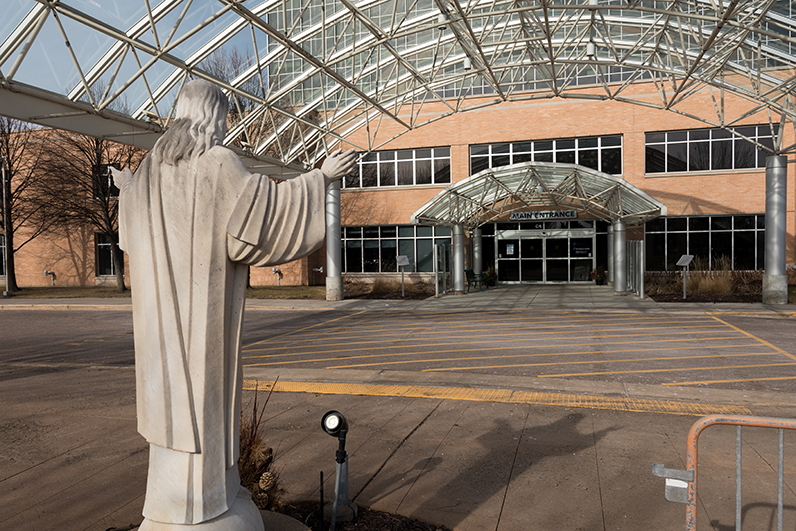
HSHS Sacred Heart Hospital in Eau Claire, Wisconsin, traces its roots to 1889, when a group of Hospital Sisters arrived to establish health care in the community. The sisters first provided care in a private residence then opened a three-story hospital in 1890. Here is the present-day facility, which is slated for closure.
Hospital Sisters Health System announced early this year that it is closing its two Western Wisconsin hospitals by March 22. HSHS's physician network partner, Prevea Health, is closing all of its locations in that region by June 30.
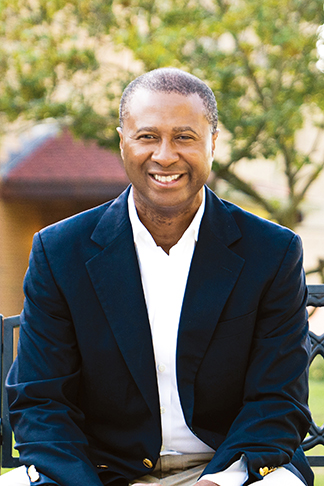
HSHS said multiple factors led to the closure of HSHS Sacred Heart Hospital in Eau Claire and HSHS St. Joseph's Hospital in Chippewa Falls. These factors included "prolonged operational and financial stress related to lingering impacts of the pandemic, inflation, workforce constraints, local market challenges and other industrywide trends," according to a press release.
HSHS President and CEO Damond Boatwright spoke to Catholic Health World about the closures and the implications for rural health care.
His remarks have been edited for length and clarity.
What are some of the key points you'd like people in the ministry to know about these closures?
Our situation in Western Wisconsin is a wake-up call about the crisis rural providers are facing in general and in particular what has
been a reoccurring issue in Catholic health care, because historically we serve rural areas. Hospital Sisters, as a Catholic ministry, went through a very thoughtful and formal discernment process to make this decision and that gives us comfort that
we came to this decision in alignment with our mission and core values.
Although this was difficult and heartbreaking, I honestly feel like Catholic organizations have to make the tough decisions so they can be stronger and better carry out their own mission for their sisters for the next century.
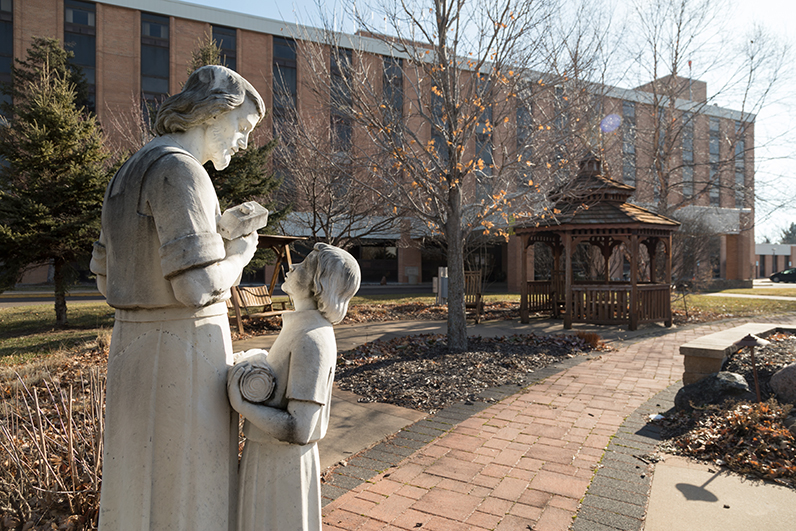
The Hospital Sisters of the Third Order of St. Francis came to Chippewa Falls, Wisconsin, on June 28, 1885, at the invitation of Fr. Charles Goldsmith, the first and only pastor in Chippewa Falls at the time. The sale of hospital tickets to loggers funded the procurement of the property and building additions. A $5 ticket insured the holder for one year in case of sickness including medicine. Here is the present-day flagship ministry of the sisters in Chippewa Falls.
What was it about the Western Wisconsin market and these particular facilities that made them so vulnerable to some of the pressures hitting rural markets?
The Chippewa Valley region is similar to many other small rural areas where
Hospital Sisters have facilities and where Catholic health care has facilities. And many of these communities are suffering from decreases in patient population and patients are deferring health care services due to increased out-of-pocket costs,
inflation, labor shortages, high labor costs, access issues.
What's different in this particular market is that there are four hospitals serving this one rural area.
The sisters and our ministry were in this market for 140 years approximately. For 115 years we were the only ones in the market, which is a similar story to most Catholic organizations in rural markets. Well, in the last 25 years a lot more competition entered into these areas.
We know how to compete. But there's a point where you're competing with "enough resources" in an area versus a surplus of resources in an area.
How did payer mix factor into the dynamics in this market?
HSHS is here to serve all patient populations, that's a hallmark of Catholic health care. We've been willing to step up and do that any time we've been asked to do so. And
for 115 years, we did that successfully. The question is over the last 25 years, what were the new dynamics?
What is so interesting is that more than 60% of the region's indigent population, Medicaid and Medicare population all ended up in our facilities, not spread out equally among all four hospitals.
What other approaches did HSHS try before deciding on closure?
We did things that most organizations do: we tried to turn things around through operational improvements, we tried to make service mix changes, we had some labor force
initiatives and rightsizing — all these things people are familiar with. We tried to rebuild our medical staff by employing our own doctors.
Then we also took an extraordinary step and tried to create our own insurance company and plan to roll out in the market. It was a commercial product, and it lowered the cost of care for those who signed up for that narrow network product. In hindsight, if there had not been many options in that community, it could have worked successfully. But the community had more than enough health care offerings and people wanted choice. That's what we found out. People wanted as much choice as possible and so that strategy did not work as effectively as we would have liked.
What did HSHS do when those strategies failed?
After trying all those things, we realized it would not work for us to continue the way we had been operating and so we sought strategic alternatives for these hospitals and our Prevea
physician partner. Prevea is an aligned medical group we have a professional service agreement with in Wisconsin.
We worked with experienced national third-party industry experts to analyze utilization data, labor and supply costs, and all other relevant information to develop a feasible path forward. That also included identifying potential partners. They included other Catholic health partners — and we gave them first right of refusal.
In 2023 we were able to identify only one potential partner that just happened to be non-Catholic to work with towards an agreement. The idea was to try to turn operations over to them.
After six months of due diligence — the whole process took nine months — our one potential partner came to the same conclusion: In this current environment and given the market dynamic that existed in Western Wisconsin, there was no feasible path. The market is oversupplied. Plus, you need a reliable physician partner, committed to work with you, to advance your mission and to be the provider of choice in that area.
What did the discernment process look like for this decision?
As a Catholic organization, our goal is to simultaneously live our value commitments and make sound financial decisions. It is not "either or," but "and." It doesn't mean
we avoid hard decisions like closing a hospital, but it does mean we have to consider our values as we make such decisions.
So, for difficult decisions with significant implications for our colleagues, and patients and mission, we intentionally use our formal discernment process that helps ensure decision-makers consider our values, explore and exhaust all alternatives and mitigate negative implications to the degree possible.
There are two distinct discernment processes that were undertaken at HSHS in respect to the decision about the Western Wisconsin hospitals. The first was regarding the decision to seek a partner or buyer and the second was regarding the decision to close after no buyers were interested in assuming ownership despite our willingness to transfer the hospitals in a cashless transaction. That's another key, it would have been a cashless transaction, they'd get our hospitals for free.
So after receiving the news that the Catholic systems we contacted did not want to move forward and that our one non-Catholic partner could not move forward, we revisited our discernment process and once again discussed the situation with both boards — our operating board and our ministerial board. Our shared conclusion is that we have no other option but to exit the Western Wisconsin region.
We kept our governing and ministerial boards and the sisters apprised throughout the process, and we actually did three levels of discernment. We did discernment for my senior executive team, and that included individuals and leaders in the Western Wisconsin market where these hospitals would be impacted. We did a second level of discernment at the operating/governing board level. And then we did a final and third discernment at the ministerial board level that included our sisters. And we not only shared data about the market and the challenges but also how we would work diligently to prepare a carefully thought-out plan to exit the market. This included multiple discussions with various stakeholders throughout shared services to make sure that this was in line with our mission and our values. In addition, the plan was carried out in a very thoughtful way and in consideration of who we are as an organization. And as I look back, this was an 18-month to two-year discernment.
In addition to pushback you received in the community, did you also get support?
We did end up getting support from the market as we moved along in this process. We are at a point where in the beginning it is quite emotional and
heartbreaking and in fact it became very personal for individual colleagues as well as community members who have relied on us for over a century.
As I look back to where we started and where we are now, it was very similar to going through psychiatrist Elisabeth Kübler-Ross's five stages of grief.
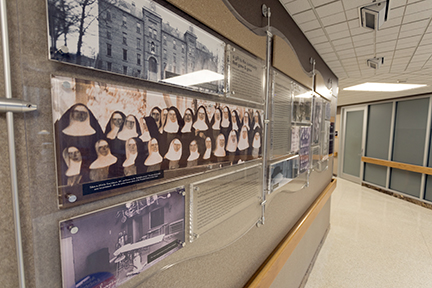
In the beginning when people heard the news it was outright denial, like "I don't believe this, this is not happening to us," and then it quickly got to a lot of anger. Then we had certain groups that had a vested financial interest in us remaining open because it may impact their own business model, such as vendors, and they were trying to negotiate something different. But once we got through that — and that took about three weeks or so — and people started to process where do we go from here, including the media, then it became very productive, and even constructive, with people trying to find solutions to make this transition happen as effectively as possible for all stakeholders involved.
The media, of course, in the beginning tended to oversimply and focus on the most dramatic elements of this story. But I can tell you that in our direct conversations with public leaders, private leaders and elected officials, no one at all disputes the facts. They don't like the decision, but no one disputes the difficulties, the challenges, that we face and the unique scenario that impacted us as the rural provider.
I think that this truly is a wake-up call for many people about the rural health care network, that they really are in trouble and that there needs to be regulatory intervention in some cases, there needs to be financial support almost in every case and there needs to be more sympathy as well as empathy for the struggles that are impacting Catholic rural health care providers in particular. And let's not wait until you hear that they are closing to say we need to respond now and find a way to help these hospitals stay open.
And I think in rural areas, you need a private and public and community collaboration in order to make it work. All the onus should not be put on one entity. You need everyone set up to sustain the right health care resources for that community.
How is HSHS staying true to its mission when it comes to how it is exiting the market?
Many other organizations in similar circumstances that are not Catholic would have just left the market. Instead, what we decided to do was reach
out to the other health care providers to say we want your help in collaborating and trying to figure out safe care transition plans for all of our patients.
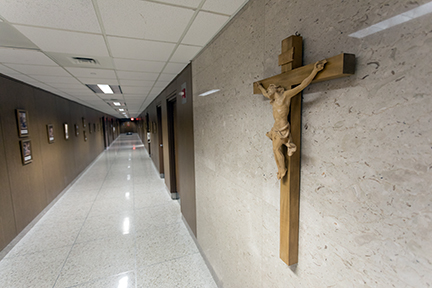
We reached out early to elected officials to give them a heads-up that this was occurring so they wouldn't be caught off guard and so they could hopefully provide calm, reassuring messaging to our community members. We connected with local community members like those on our local boards and we provided talking points to them that were consistent with what I was sharing with our own colleagues around how we got here and where do we go from here.
I am also proud when I think about how we revealed and embodied the healing love of Jesus for our own colleagues who might be hurting. We proactively led job fairs, even though we still had hospitals to run.
We wanted to make sure that we took care and helped them find employment if we could and provided them benefits like severances in the event that they were without a job right after the close. We also had virtual EAP resources on-site to help them go through this.
Other organizations may have just cut and run without any regard to the collateral damage caused by this, but we wanted to continue to lead with our values and do the right thing even though people may not have been ready for this.
What do you see as a main takeaway for the ministry?
It is important for us and all CHA members to continue to understand the importance of advocacy, advocacy, advocacy, and our ability to retain our nonprofit status.
We're not for profit, we do not want to behave like the for-profits do. So, us advocating to protect our mission focus for our communities, and treat their whole body, mind and spirit, I think there is still relevance for that model in health care.
Just by the reaction we're hearing now that we've said we're closing, I think people realize the importance of having Catholic health care in their communities. Advocacy, if we're doing it right, helps them realize this before it's too late.
